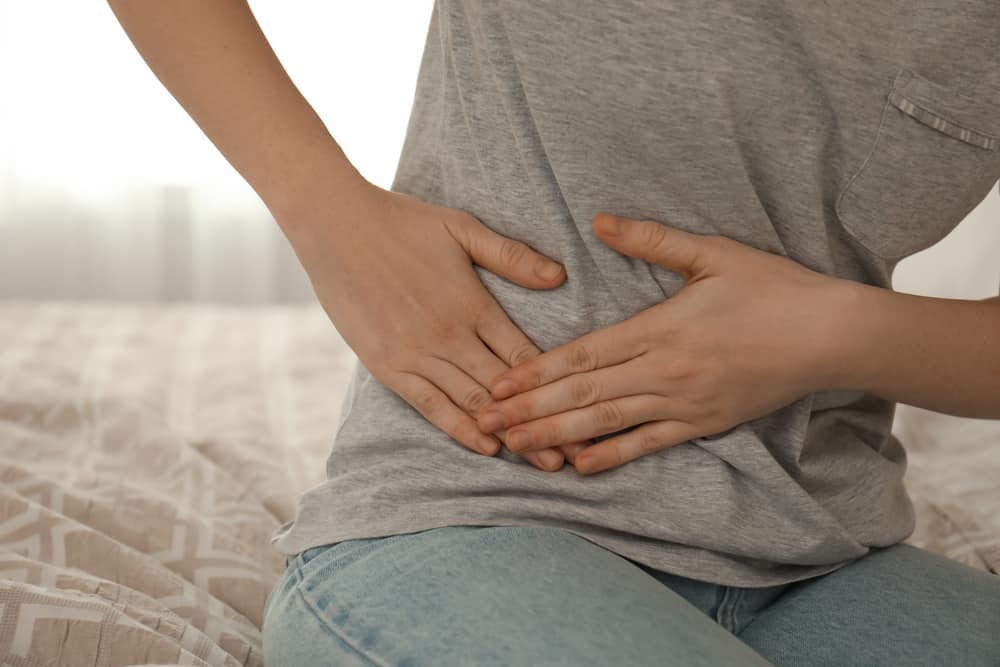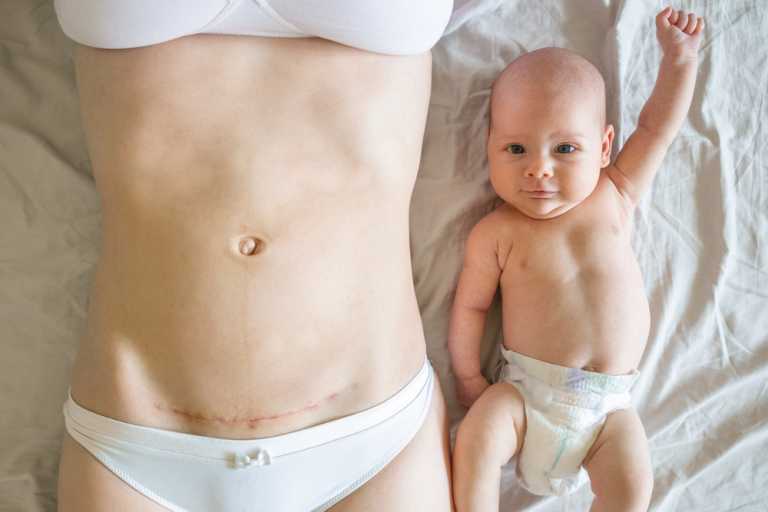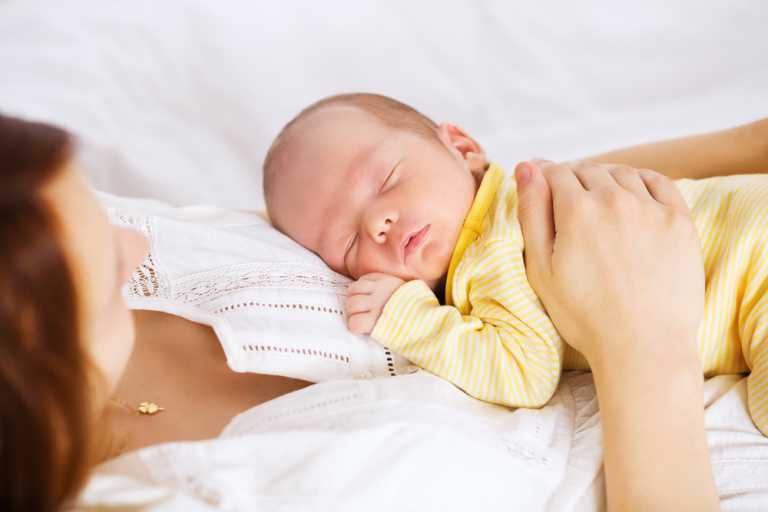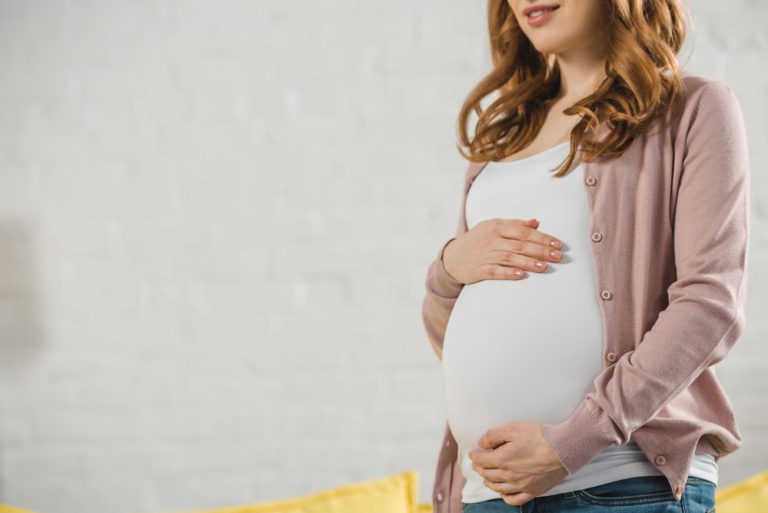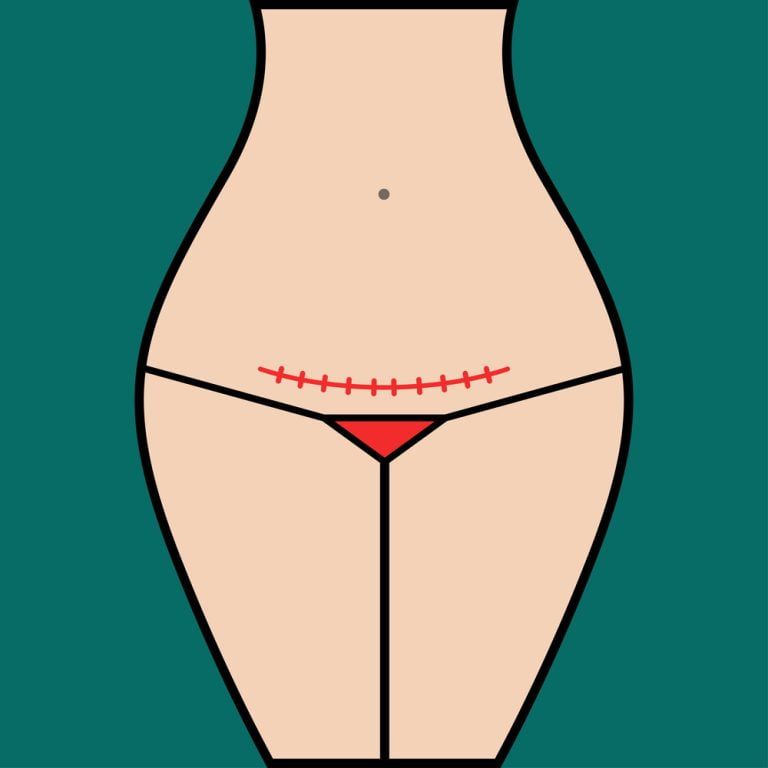Dull, achy pains after a c-section are to be expected. But what about sharp, stabbing, or shooting pains in your right side? Are they normal too, or do they mean something is wrong?
Happily, the most likely explanation is that you’ve experienced some nerve damage that’ll heal on its own. Or it could be that you’re just suffering from some trapped wind or a muscle spasm. However, right-side pain can also signify a more serious condition like a hernia, entrapped nerve, or infection.
Here’s everything you need to know to figure out the source of your pain, including your treatment options and how to get some relief at home.
What Can Cause Right Side Pain After a C-section?
To get to the bottom of your post-cesarean discomfort, let’s check out the potential culprits.
Nerve Damage
As your surgeon performed your c-section, they likely cut through some nerves. This isn’t a failing on their part. It’s almost impossible to avoid them.
Usually, severed nerves cause numbness. However, they can also cause extreme pain that:
- Is stabbing, burning, shooting, or searing.
- Results from a light touch, e.g., water splashing the skin or shaving.
- Feels like electric shocks.
- Wraps around your back or radiates down your legs.
Nerve Entrapment
Sometimes, the severed nerves can become stuck in your stitches or surrounded by scar tissue. This causes similar types of pain as nerve damage but is more intense.
The most common nerves involved include:
- The ilioinguinal – affects the lower abdomen and upper thigh.
- The iliohypogastric – affects the abdomen and pelvis.
- The genito-femoral – affects the abdomen, groin, and mid-thigh.
Trapped Gas
After your cesarean section, you’re incredibly likely to be constipated. This is due to the disruption of your bowel and the side effects of anesthesia.
Unfortunately, constipation causes a buildup of gas, which can be incredibly painful.
Muscle Spasm
C-sections aren’t just a big deal for your nerves; they can also damage your abdominal muscles, particularly if you spent time pushing before surgery. This can result in muscle spasms in your abdomen.
When the muscle spasms, it reduces blood flow and squeezes your nerves, causing sharp pains.
Incisional Hernia
An incisional hernia occurs when your incision doesn’t heal properly and tissue pokes through your abdominal wall. Typically, you’ll see a bulge in your stomach at the point where it hurts.
You may also experience the following:
- Thin or narrow stools
- Constipation
- Nausea
- Fever
If you notice any lumps or swelling around your incision site, see your doctor. You may require treatment, or it could be a sign of something more serious.
Infection
Stabbing abdominal pains can also be a sign of an internal infection. This is a serious and potentially life-threatening condition.
Seek help right away if you experience:
- A fever
- Chills
- Nausea or vomiting
- Abdominal pain
- Redness spreading around your incision
Adhesions
Adhesions are bands of scar tissue that stick together layers of your stomach that shouldn’t be joined. For example, loops of your intestines may become attached to themselves or stuck to your abdominal wall.
As your organs usually slip past each other freely, adhesions can be incredibly uncomfortable and/or painful.
Other symptoms include:
- Nausea
- Vomiting
- Bloating
- Constipation
Ruptured Incision
Occasionally, your internal stitches can fail, allowing your incision to open. This is called postpartum uterine wound dehiscence, and it’s understandably painful. It can be caused by infection, poor suturing, or doing strenuous activities too soon after your c-section.
Symptoms include:
- Sudden heavy bleeding
- Passing large blood clots
- Abdominal pain
- Fever
- Shortness of breath
- Dizziness
- Abdominal bruising
- Painful urination
- Uncomfortable bowel movements or constipation
Wound dehiscence is a medical emergency; you should contact your doctor immediately if you suspect it.
Treatments for Right-Side Stabbing Pain After C-Section
Once the source of your stabbing pain has been diagnosed, the next step is treatment. Here’s what you can expect for each complication:
Nerve Damage
Your doctor can identify the damaged nerve by injecting a nerve blocker. This will numb it and stop the stabbing sensation instantly, ruling out any more serious issues.
Fortunately, damaged nerves should heal on their own within 6 months, and your symptoms will disappear. However, you should still see a doctor ASAP to rule out entrapment.
Nerve Entrapment
If your nerves are trapped in sutures or scar tissue, your body won’t be able to fix the issue on its own. So, if you’ve been suffering for 6 months or more, they’re likely entrapped.
Fortunately, this can be treated by a specialist surgeon, who may perform one of the following:
- Neurolysis – where scar tissue is removed from around the nerve, allowing it space to heal.
- Nerve Repair – where severed tissue is stitched back together.
- Nerve Grafts – when a portion of a nerve is taken from a non-critical part of your body and used to repair the damaged one.
Generally, the sooner you receive treatment, the better the outcome. So, if you suspect nerve entrapment, don’t wait. See your doctor right away.
Trapped Gas
Your trapped gas will be relieved as soon as you can get your digestive system going again.
To do this, try the following:
- Drink peppermint tea.
- Walk.
- Drink plenty of water.
- Chew gum.
- Eat fruits like prunes or apricots.
- Speak to your doctor about your medications and supplements—some, particularly iron tablets, cause constipation.
Muscle Spasm
Muscle strains and spasms will heal on their own in a few weeks. You can ease the process by alternating ice and heat packs and massaging the area. You may also find a TENS unit helpful.
Incisional Hernia
Incisional hernias won’t heal on their own, so you’ll usually require surgery. Fortunately, simple hernias can be treated laparoscopically, requiring only a keyhole-sized incision. For larger or more complex hernias, you may require open abdominal surgery.
Infection
If you’ve developed an infection, you must seek medical help immediately. In mild cases, you may require a course of antibiotics. You may need surgery to remove the dead tissue and intravenous antibiotics for severe infections.
Adhesions
The only effective treatment for adhesions is surgery. Unfortunately, this carries the risk of more adhesions forming as a result.
However, there is hope. Laparoscopic surgeries are less likely to cause them. So, if your surgeon can sever the adhesions laparoscopically, your symptoms may be relieved.
It’s also essential to follow your aftercare instructions to the letter. This normally includes scar massage, which is the best way to prevent them.
Ruptured Incision
The treatment for internal c-section incision rupture will differ depending on its severity. A small opening can usually be treated with antibiotics and a fluid drain. Mid-sized ruptures will need surgery, and large ruptures may require a hysterectomy.
How to Relieve Stabbing Pains After a C-Section at Home
If you’ve seen a doctor and have been reassured that you don’t need urgent treatment, you’ll need to relieve the discomfort at home.
Here are the best ways to do it:
- Rest – Avoid heavy lifting, exercise, bending, pushing the shopping cart, or any activity that might put pressure on your scar. It’s also important to support your stomach when coughing.
- Hot and Cold Therapy – Use cold compresses and hot water bottles to reduce swelling and inflammation. You can alternate between them or just use the one that helps the most.
- Massage – Massage can help break up scar tissue and promote healing. However, it’s important to do it safely and go deeper than you think. So, either visit a specialist massage therapist or get instructions from a reliable source.
- Physical Therapy – A qualified physical therapist will help you regain strength in your abdomen and have a faster recovery.
- Pain Medication – Your doctor may prescribe medication to help ease your discomfort. If not, it’s usually OK to take ibuprofen or acetaminophen but check with your healthcare provider first.
Remember – Just because you can manage your pain at home doesn’t mean you shouldn’t report it. Many conditions associated with stabbing pains are serious and benefit from early intervention.
